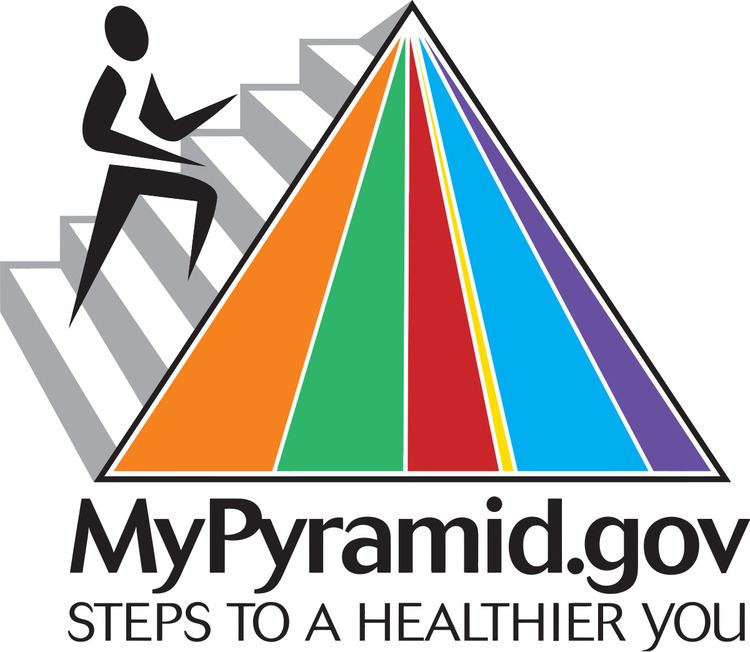 | ||
MyPyramid, released by the United States Department of Agriculture (USDA) on April 19, 2005, was an update on the earlier American food guide pyramid. It was used until June 2, 2011, when the USDA's MyPlate replaced it. The icon stresses activity and moderation along with a proper mix of food groups in one's diet. As part of the MyPyramid food guidance system, consumers were asked to visit the MyPyramid website for personalized nutrition information. Significant changes from the previous food pyramid include:
Contents
MyPyramid was designed to educate consumers about a lifestyle consistent with the January 2005 Dietary Guidelines for Americans, an 80-page document. The guidelines, produced jointly by the USDA and Department of Health and Human Services (HHS), represented the official position of the U.S. government and served as the foundation of Federal nutrition policy.
Overview
MyPyramid contained eight divisions. From left to right on the pyramid are a person and six food groups:
There is one other category:
Themes
The USDA encoded six themes into the design of the MyPyramid icon. According to the USDA, MyPyramid incorporated:
Differences from the food guide pyramid
In a departure from its predecessor the food guide pyramid, no foods are pictured on the MyPyramid logo itself. Instead, colored vertical bands represent different food groups. Additionally, the logo emphasizes physical activity by showing a person climbing steps on the side of the pyramid. MyPyramid was intentionally made simpler than the food guide pyramid after several USDA studies indicated that consumers widely misunderstood the original design. Consumers were asked to visit the (now defunct) MyPyramid.gov website for personalized nutrition information.
The food guide pyramid gave recommendations measured in serving sizes, which some people found confusing. MyPyramid gives its recommendations in common household measures, such as cups, ounces, and other measures that may be easier to understand.
The food guide pyramid gave a single set of specific recommendations for all people. In contrast, MyPyramid has 12 sets of possible recommendations, with the appropriate guide for an individual selected based on sex, age group, and activity level.
Controversy and Criticism
Some claim that the USDA was and is unduly influenced by political pressure exerted by lobbyists for food production associations, in particular dairy and meat. Some nutritionists and critics found MyPyramid overly complicated and difficult or impossible to teach.
Development
In September 2005, a "child-friendly version" of the food pyramid graphic and food guidance system launched. Three of five meetings had been held as of May 2009 towards the publication of 2010 dietary guidelines.
The research process and results used to create the MyPyramid Food Guidance System was documented in a supplemental issue of the Journal of Nutrition Education and Behavior published in November/December 2006
